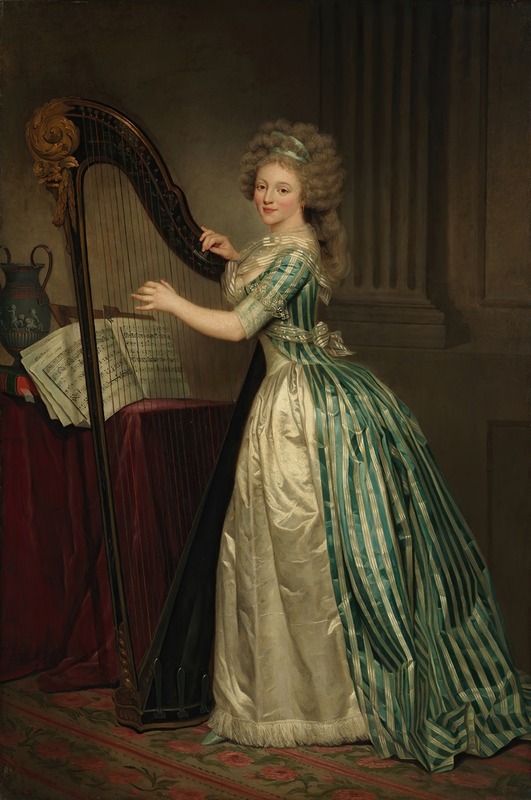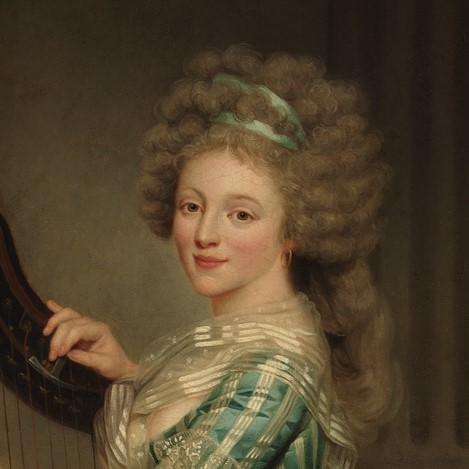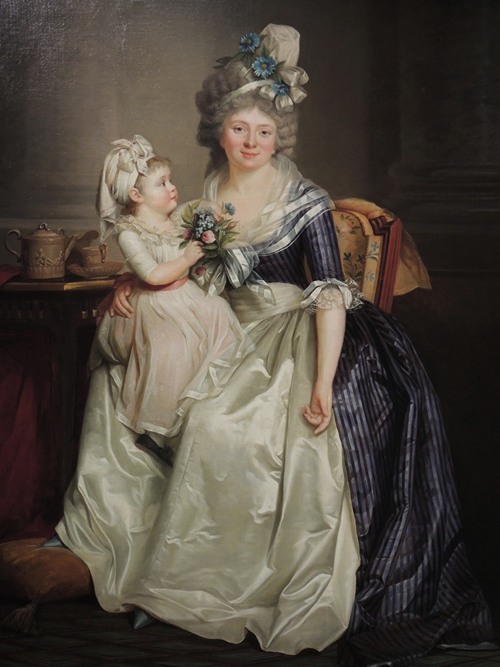

Rose-Adélaïde Ducreux was a French painter and musician, born in Paris. She was the eldest daughter of Joseph Ducreux, with whom she also studied. She showed her works at the Louvre Salons in 1791, 1793, 1795, 1798, and 1799. She was accomplished both as a performer and as a composer.
In 1786, Ducreux first exhibited at one of Pahin de la Blancherie's bi-weekly exhibitions, known as the Salon de la Correspondance. This self-portrait in pastel at an unknown location depicted the artist in the act of painting. Her self-portraits often included musical and artistic attributes.
A self-portrait of Ducreux seated at a piano-forte, c. 1785, formerly part of the Erlanger Collection, was misattributed to Jacques-Louis David for a long time, as were other pieces of her work. Work by Decreux has also been misattributed to her contemporaries, Antoine Vestier and Élisabeth Vigée Le Brun. In her brief career, Ducreux exhibited at a number of important exhibitions beginning in 1786 and continuing until 1799, including the January 1786 Salon de la Correspondance. Ducreux made her debut at the Louvre Salon in 1791, where she submitted a portrait of a young woman and a life-size, full-length self-portrait in which she is depicted playing the harp; the latter oil on canvas is now in the collection of the Metropolitan Museum of Art, though many of her works remain untraced today. She never signed her work. As with many women artists of the eighteenth century, Ducreux painted herself with an object of accomplishment, the harp, rather than her painterly tools in the fashion of her male counterparts.
In 1802, Ducreux moved to Saint-Domingue, where she married the maritime prefect, François-Jacques Lequoy de Montgiraud. She died shortly after of yellow fever.

